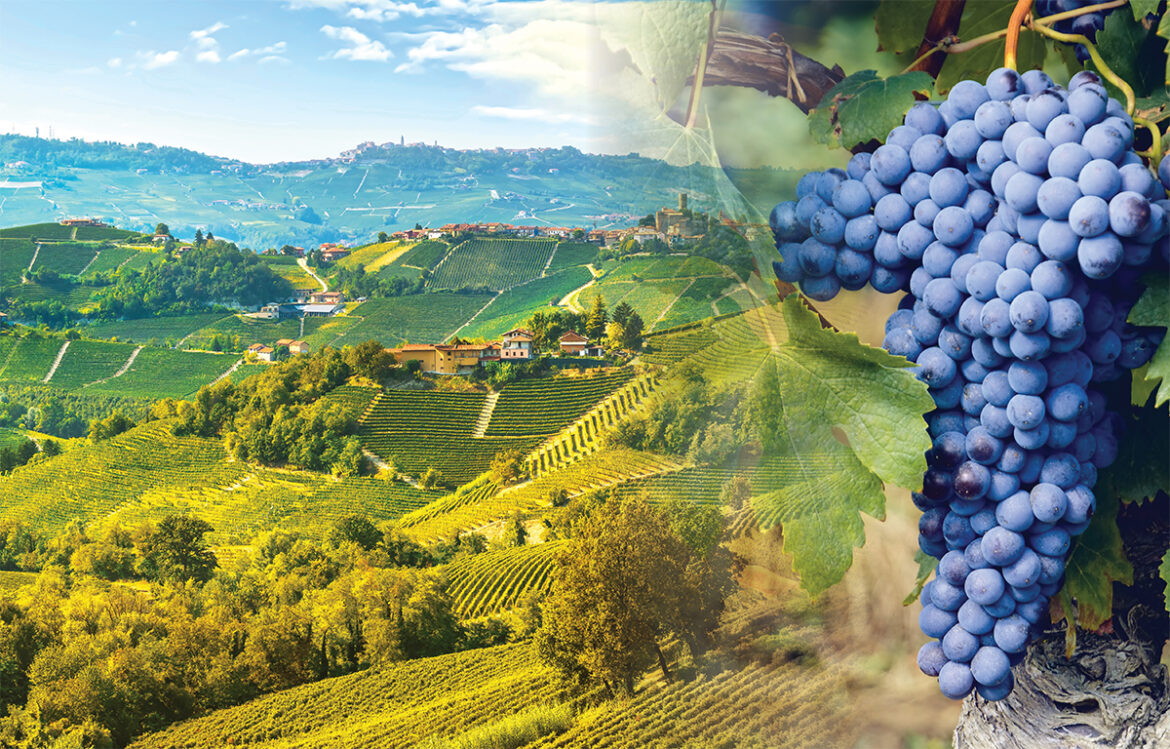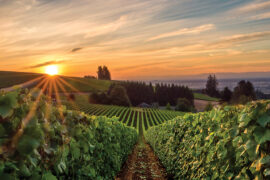An induction to the Italian wine that may be one of the world’s finest.
By Matthew DeBord
HQ 118 | SUMMER 2022
Among the great wines of the world, Italy’s Barolo is perhaps the least well-known, the most obscure. Among connoisseurs, it ranks with the finest France has to offer and stands as the polar opposite of the lush California Cabernet Sauvignons that have come to define the “modern” style of winemaking.
Barolo, however, is such an insider’s wine that most oenophiles don’t get around to sampling it until after they’ve gone through California Cabs, Oregon Pinot Noirs, French Bordeaux and the manifold perplexities of French Burgundy. Hailing from the northern Italian region of Piedmont, Barolo is made from the Nebbiolo grape and has been around for centuries. In the past 50 or so years, the contemporary style has been codified.
The Nebbiolo grape is often likened to Pinot Noir and the Barolo region to Burgundy, and for good reason — for much of its history, Barolo was bottled and sold by local wine agents who would buy up the grapes of finished wines from growers. Since the wine boom of the 1980s, Barolo has become identified with single houses, and there’s been an appreciable uptick in overall quality as some pioneering, entrepreneurial producers have broadened Barolo’s global exposure.
Not that the improved quality has necessarily led to more approachable wines. To the modern palate, Barolo is going to seem harsh and stingy with the fruit flavors at first; the wines are defined by very crisp tannins and high acidity. Over the years, these aspects fade and Barolos develop their hypnotic aromas and depths of taste, contributing to completely unique profiles for a red wine. People genuinely get lost in Barolo, in ways that they don’t even with Burgundy.
Get used to the idea of aging if you delve into Barolo. The wines already spend several years in oak barrels before they’re released, and that’s just the beginning. Ultimately, a ruby-red young Barolo needs to age for enough time to develop a distinctive brick-like orange color, at which point a riot of flavors emerges. Black licorice is common, along with notes of herbs and woody, resiny elements. Fruit flavors, such as black cherry, usually have a curious cooked or baked quality that’s nonetheless fresh and rich, a paradox that fascinates oenophiles.
Given all this, top Barolos command high prices. The entry point for the good stuff is typically well above $50, closer to $100 in most cases. And don’t forget about the upkeep. One of my favorite Barolos has been in my wine cellar since Bill Clinton was president, and it’s only just getting drinkable.
Fortunately, better Italian restaurants, and notably ones that specialize in the butter-heavy cuisine of northern Italy, stock older Barolos. Compared with similarly elderly Burgundies, these Barolos are a steal, and thanks to their obscurity, you can have the best all to yourself.
When it comes to food matching, Barolo is definitely quite regional. An ideal accompaniment is something like a creamy pasta sauce covered in some shaved white truffles, followed by roasted meat. The high acidity and tannins in the wine slice through fat, but when paired with fish or simply grilled proteins, I tend to find Barolo to be the wrong choice. It’s not a very good steak wine, either, in my opinion. If you like pork chops, however, you’re good to go.
The labels to seek out and that are widely available in the U.S. are Gaja Barolo Conteisa, Pio Cesare, Paolo Scavino and Vietti. There are of course many more, but that’s a nice start. I recommend sampling some pricy Barolos at restaurants for special occasions before taking the purchasing plunge, just so you know what you’re getting into. To be honest, Barolo is an acquired taste.
In this sense, Barolo is so serious and food sensitive that it makes an ideal wine-club wine. Gather some pals and alert them that Barolo is on the menu, and then sit down for a few hours of cerebral investigation of all this downright aristocratic wine has to offer. Sniff for a long time before committing to that first sip and savor literally every drop. Serve with a little prosciutto on the side to take the edge off the tannins.
You might even want to lose the weekend shorts and T-shirts and dress up a bit. Because in the end, Barolo is less about being fun and friendly and more about making you think. It encourages you to rise to the moment and use all your senses, including the more poetic sides of your intellect, to make sense of its refusal to be easygoing. In a world where too many wines taste the same and hope to please all customers, Barolo retains a throwback austerity that assumes you’re interested in working for your pleasure — and the rewards that come with it.





